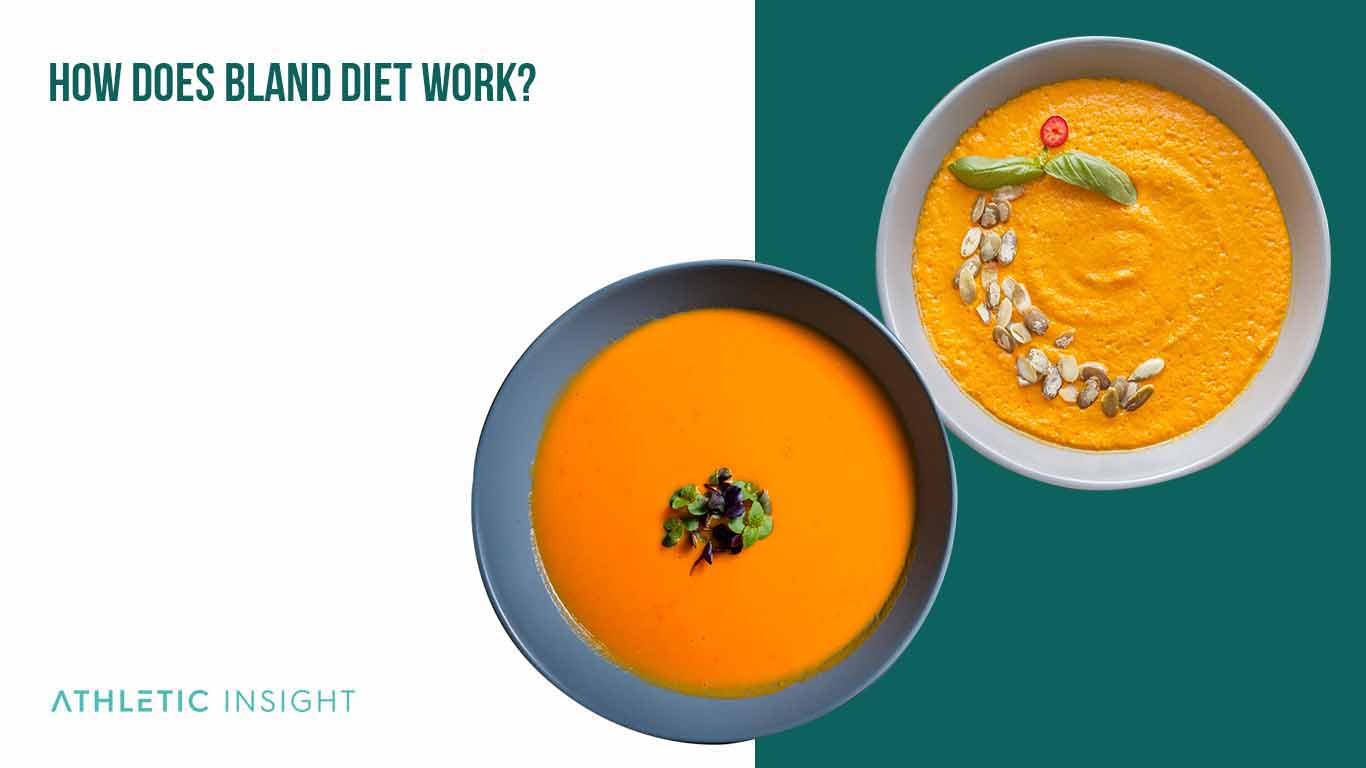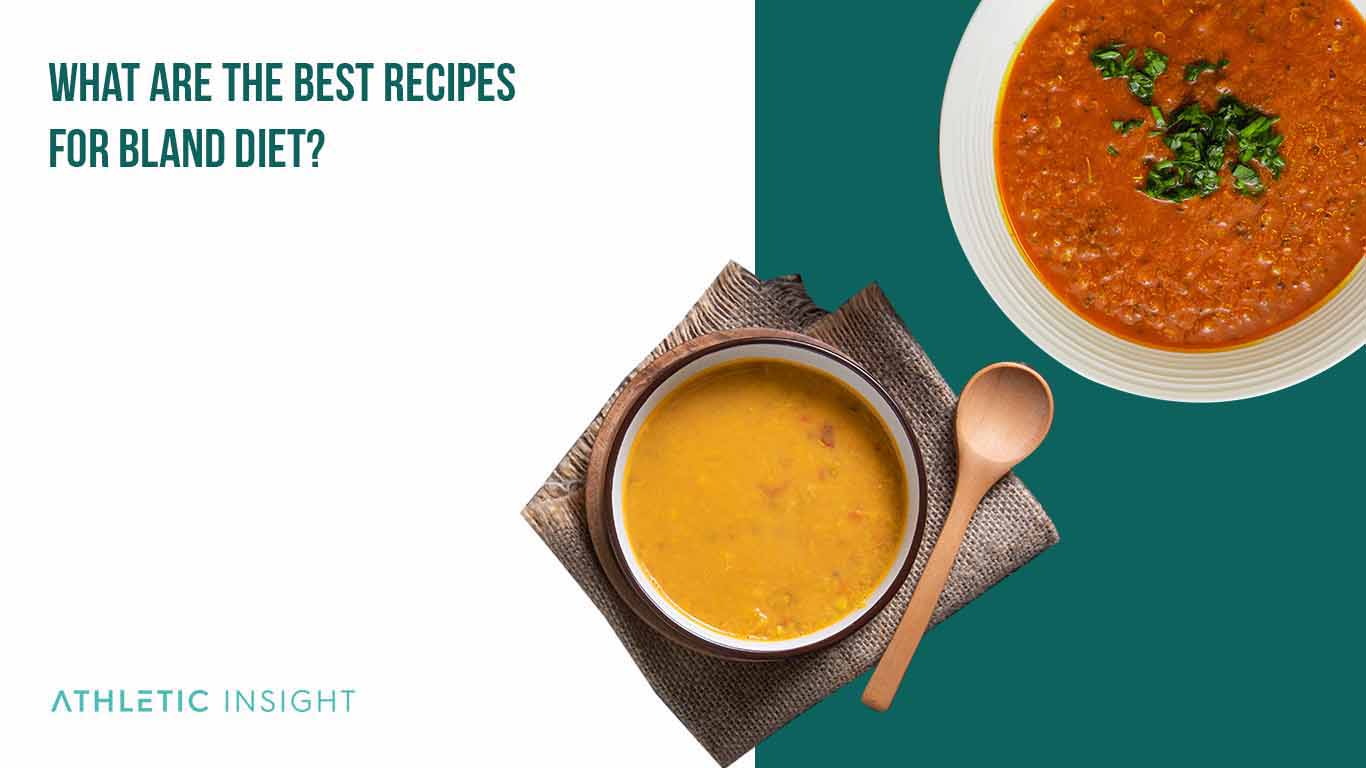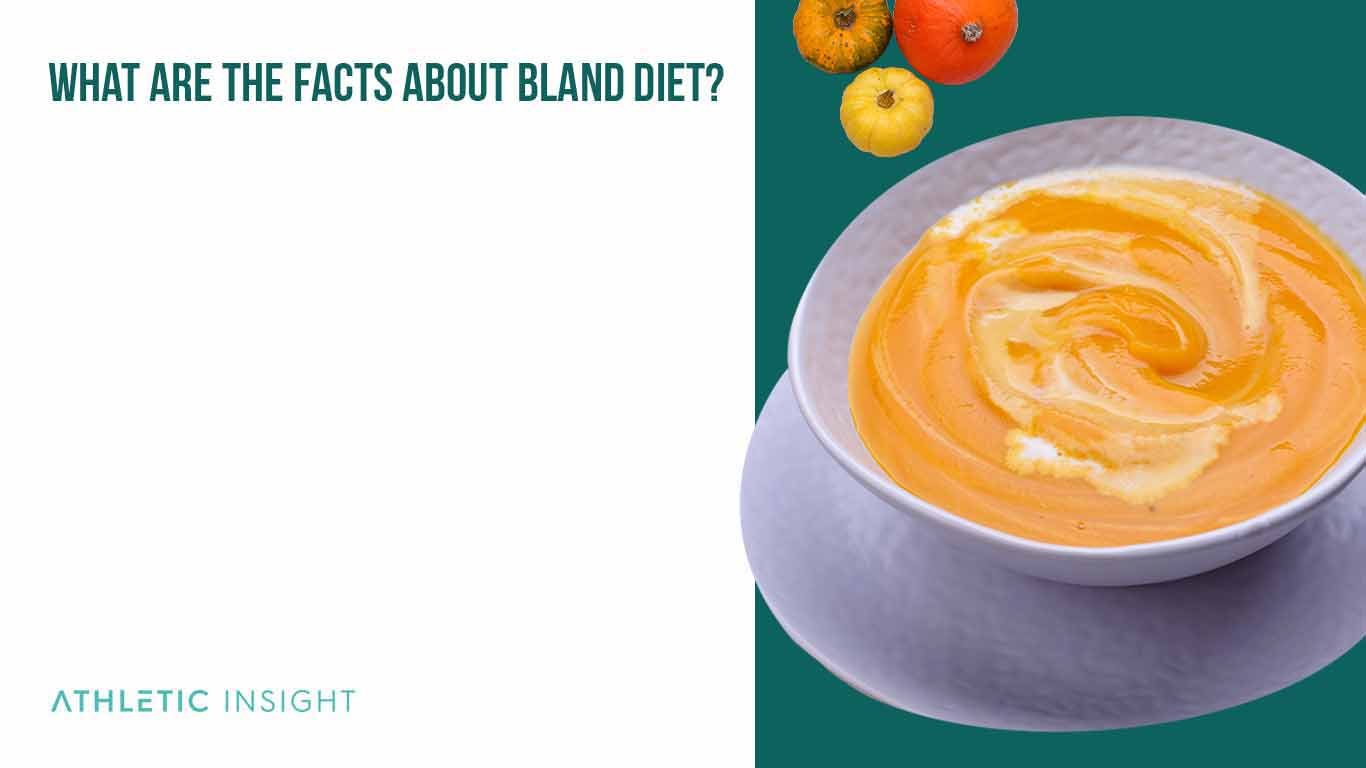The bland diet is a nutritional diet that consists of foods that are generally considered bland. The bland diet mitigates symptoms from complications like GERD, heartburn, nausea, vomiting, and ulcers. The bland diet is often recommended by doctors after stomach or intestinal surgeries.
The main benefit of the bland diet is that it allows your digestive system to take a break from breaking down complex acids or spices. It is not a diet you should keep for an extended period, so when you are ready to reintegrate other foods back into your diet, consult a doctor for the safest reintegration practices.
How Does the Bland Diet Work?
The bland food diet allows your body to digest foods that are low in fat, low in fiber, and easy to chew. These foods should also be bland in flavor. The main emphasis is that they are easy to digest.

The diet works by giving the dieter enough nutrients and calories throughout the day to help them maintain a healthy weight while dealing with digestive discomfort and pain. It allows the dieter to live a healthy lifestyle while giving their digestive system time to relax and reset.
Why Follow the Bland Diet?
Most people follow the bland diet because it is easy on their digestive system. It also lets the dieter receive plenty of calories and nutrients even though they are eliminating other types of foods. Diseases like cancer, GERD, IBS, and other digestive issues are examples of illnesses the bland diet can alleviate.
What Are the Health Benefits of the Bland Diet?
The health benefits of the bland diet include easing the symptoms of nausea, GERD, vomiting, heartburn, loss of appetite, diarrhea, or changes in taste. It is also great for people who need to eat small meals throughout the day due to digestive issues. Though the meals are smaller, they are full of calories and nutrients. Below are the three benefits of the Bland Diet.
- Heart Health with Bland Diet: The bland diet is good for heart health. It also reduces cancer risk and prevents Type 2 Diabetes. The bland diet foods lower blood pressure, promote bone health, and decrease asthma symptoms.
- Bland Diet for Weight Loss: Using the bland diet for weight loss is a good route because you will still have nourishing meals, but everything is plain and cooked simply, not in high-fat additives. It is not a recommended diet for extended periods, so while it might help with weight loss initially, you can not sustain it solely on the bland diet.
- Bland Diet for Cancer Treatment Symptoms: Some people undergoing treatment for cancer experience nausea, diarrhea, and loss of appetite. Using the bland diet would be helpful for their fragile digestive systems and quality of life.
What Are the Health Risks of the Bland Diet?
Generally, the bland diet does not have many health risks. The main risk is that it could cause constipation without drinking plenty of water. You should eat slowly and thoroughly chew your food on a bland diet. Avoid lying down after eating.
Overall, the bland diet comes with minimal health risks. However, proper adherence to the diet is required to see results and to avoid furthering your health issues.
How To Do the Bland Diet?
Adherence to the bland diet is not difficult, but it does require creativity. For those who enjoy complicated meals and switching up their cooking styles, it might be hard to adhere to. However, plenty of foods on the bland diet are allowed, and spices like salt and marinades are crucial to providing variety while on the diet.
It is easy to follow a bland diet. Chew your food fully and eat small meals throughout the day. Adhere to the diet for a few days and then re-evaluate.
How Many Calories Should You Consume When Doing a Bland Diet?
Consuming enough calories on the bland diet is not a challenge because many allowable foods are calorie dense. There are no calorie restrictions when following this diet.
What Is the Proposed Time Frame for the Bland Diet?
For most people following the bland diet to alleviate gastrointestinal or stomach issues symptoms, a general time frame of 3-5 days is plenty. Just like the soft food diet, or BRAT diet, the Bland diet can temporarily cause some of the symptoms you are trying to fight against.
In some cases, you might need to be on a bland diet for only a day or two to give your digestive system a rest after issues like nausea or vomiting. You can reincorporate foods into your diet as your stomach can tolerate them after a few days.
What Are the Best Practices for Following a Bland Diet?
You should drink a lot of water, chew slowly, and adhere to the restrictions consistently. Staying on track with this diet is necessary to see results.
It is also necessary that you try to eliminate stressful activities so you can let your stomach rest. Anxiety and stress can exacerbate any existing gastrointestinal issues.
What Are the Foods That You Can Eat While on a Bland Diet?
What is bland food? The foods you can eat while on a bland diet are plentiful and nutritious enough that you do not have to worry about missing out on vitamins and nutrients. Below is a short list of bland foods to eat when following the bland diet.
- Low-fat or fat-free milk
- Cottage cheese
- Any plain or mild cheeses
- Cooked vegetables, including beets, carrots, green beans, mushrooms, sweet potatoes, spinach, summer squashes, winter squashes, or pumpkin
- Mild-flavored vegetable juices
- Fruit juice
- Avocados
- Bananas
- Canned fruit without skin or seeds
- Grapefruit or orange (no membrane)
- Saltine, soda, or graham crackers
- Couscous
- Dry corn or rice cereals
- Noodles, spaghetti, barley, and other pasta
- Smooth nut butter
- All lean and tender meats, poultry, shellfish, fish
- Eggs
- Crispy bacon
- Tofu
- Iodized salt
- Mild flavored gravies
- Herbal teas
- Mild dressings like mayonnaise or vinegar and oil
- Sugar, syrup, honey, jams, plain chocolate
What Are the Foods That You Should Avoid While on a Bland Diet?
Fortunately, the list of items to avoid is much shorter than the list of foods you can eat on the bland diet. The main goal is to avoid extra acids or heavily cooked or fried foods. Here is a list of foods to avoid.
- Raw vegetables
- Dried beans
- Corn
- Gas-forming vegetables like broccoli, cabbage, onions, brussels sprouts, cucumber, green pepper, cauliflower, rutabagas, turnips, sauerkraut
- All other fruits besides avocados and bananas
- Dried fruits
- Berries
- Figs
- Bread products with fruit or nuts
- Potato chips, french fries, wild rice
- Bran cereals
- Lunch meat, corned beef, sausages, sardines, anchovies, and highly seasoned or highly cured smoked meats, fish, or poultry
- Strongly flavored cheeses
- Fried pastries like doughnuts
- Any sweet containing coconut, fruit, or nuts
- Pickles or pickle relish and other highly seasoned salad toppings
- Caffeine
- Alcohol
- Olives
- Popcorn
- Aspirins and aspirin-containing medicines
Who Should Do the Bland Diet?
As mentioned, the bland diet is for people looking to give their digestive system a break. It could need reprieve for one of many reasons, but the bland diet does the same thing regardless of the reason you are using it.
What Are the Best Recipes for the Bland Diet?
The key to creating appetizing recipes for a bland diet is to use different allowable spices and vegetable or grain combinations.

Here are five of the best recipes to follow for a bland diet. They are simple to follow and easy to execute, while still being easy on your digestive system!
- Chicken and Rice Soup: The chicken and rice soup takes about an hour to make, including cooking time, it includes only ingredients approved for the bland diet, and it is still healthy and nourishing.
- Banana Slushie: Blending ingredients into a smoothie is a great way to add variety to your diet. It is a banana and ice combination that tastes much better than it sounds.
- Poached Eggs on Toast: The key to this recipe is nailing the timing of the poached egg. Follow the instructions for an easy poached egg, then place it on top of toast for one of the best breakfast options on the bland diet!
- Baked Sweet Potato: Baking a sweet potato is an easy dinner. For this recipe, you can top it with any bland diet-approved toppings you like! Try cottage cheese or some herbs.
- Basic Miso Soup: Making miso soup from a pre-made paste, as this recipe requires, is so easy! Heat the ingredients on the stove, and you’ll have a bowl of this Japanese comfort food in no time. While the Japanese Diet stays away from processed foods, so doesn’t the bland diet.
What Are the Best Bland Diet Recipes for Gastritis?
Soups are a great option for those using the bland diet to alleviate gastritis symptoms. Here are a couple of recommended recipes to use the bland diet for gastritis.
- Potato soup
- Ginger and turmeric carrot soup
- Tummy soothing smoothie with bananas, greek yogurt, turmeric, pineapples, and ginger
- Baked Chicken
- Sauteed spinach and cod fish
What Is a Sample Bland Diet Plan?
Below is a sample bland diet plan for three days. Since this diet is not for everyday use for everyone, a three-day reset might be what you need to get back to feeling your best.
Day 1
- Breakfast: Grits, scrambled eggs, stewed or canned pears
- Lunch: Cottage cheese, creamy almond butter sandwich on white bread,
- Dinner: Baked or broiled chicken, cooked peas or green beans, steamed white rice or boiled noodles
Day 2
- Breakfast: Cream of wheat or oatmeal, stewed fruit
- Lunch: Grilled chicken breast, mashed potatoes, steamed or boiled carrots, stewed peaches
- Dinner: Broiled salmon, steamed asparagus, white rice, or couscous
Day 3
- Breakfast: Rice cereal with low-fat milk, stewed fruit
- Lunch: Applesauce, cottage cheese, a cup of chicken noodle soup, plain crackers
- Dinner: Baked potato with low-fat sour cream, broiled whitefish, cooked peas
Snacks
- Plain rice cakes with creamy nut butter
- Saltine crackers
- Jell-O
- Arrowroot cookies
- Cottage cheese
- Applesauce
What Are the Facts About the Bland Diet?
The bland diet includes foods that are bland to give your stomach and gastro system a break. The first week of the bland diet menu might get boring in terms of meals, but your stomach will thank you! You may not need to use it anymore after the first week.

Eating a bland diet costs about as much as a general grocery bill. The items needed for the bland diet are likely items you are already purchasing, and the largest expense would be the fish and quality meats you might need.
How Does It Compare to Atkins?
Atkins is a diet that limits carbs. The bland diet does not limit carbs, so the two are not closely related. They are also used for different treatments. The Atkins diet is most often a weight loss diet.
The bland diet can help with weight loss because it is naturally low in saturated fat and cholesterol, but it is not a weight loss diet.
Is the Bland Diet Considered a Healthy Diet?
Yes, the bland diet is considered a healthy diet due to its omittance of processed foods, alcohol, and foods high in fat.
Is the Bland Diet Expensive?
No, the bland diet is not more expensive than a general grocery bill. The most expensive items are usually cheese and meat, which can be expensive no matter what diet you are on. Similarly to the rice diet, the bland diet can be one of thea cheapest diets due to the ability to substitute rice for many foods.
Is the Bland Diet Good for Ulcers?
Yes, the bland diet is one of the best diets for ulcers that exists. The foods you can eat on the bland diet can help mitigate the pains from an ulcer and will allow your digestive system a bit of reprieve from heavier and more difficult-to-digest foods.
Is the Bland Diet Good for Humans?
While it is not a diet meant for everyone, it is generally good for humans because it takes away many of the processed foods and fried foods that can cause health issues in humans.



